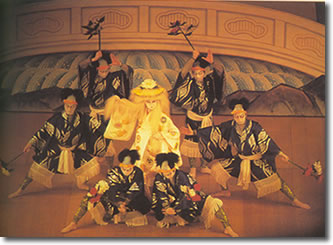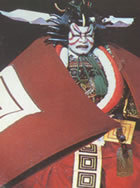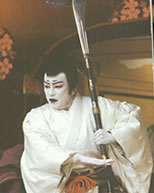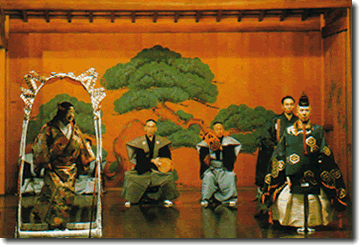
Kabuki is a traditional Japanese form of theater with its origins in the Edo period. Kabuki, in contrast to the older surviving Japanese art form such as No, was the popular culture of the townspeople and not of the higher social classes.
History
Kabuki's louche beginnings were in the early 1600s, when a woman named
Okuni led a troupe of female dancers in performances of kabuki oduri (frolicsome
dances) on the banks of Kyoto's Kamo River. The shows were associated
with lewdness and prostitution, and the authorities intervened to ban
women from taking part and handsome young boys replaced them, but the
problem of prostitution did not go away. Tokugawa Shogun banned apperance
of women in Kabuki plays. As a result all female roles are palyed by male
actors called Onna-gata and the beauty of Onna-gata became one of the
most distinctive features in Kabuki performances. Eventually the rules
were changed again - today kabuki parts are played by adult men.

Most
of all Kabuki plays were written during 17th-18th century, so the language
is hard to understand, even Japanese people. Kabuki plays are about historical
events, moral conflicts in love relationship and the like. They speak
in monotonous voice and are accompanied by traditional Japanese instruments.
The kabuki stage is big, and closer to the Western proscenium style than
the platform employed by no. Its most striking feature is hanamichi (flower
path), a long catwalk linking the front of the stage with the back of
the auditorium; along it, principal characters make important entrances
and exits. The stage floor conceals complicated apparatus for the stunts
and coups de theatre in which kabuki revels: trap doors through which
character leaps or vanish; revolving panels for quick changes of scenery;
ropes and pulleys for flying a character across the stage. Music in played
live, but the players are usually semi concealed behind wooden slats.
The music is more exuberant and noisy then no, but still far from melodic,
with much use of drums and crackers to point up spectacular moments.

